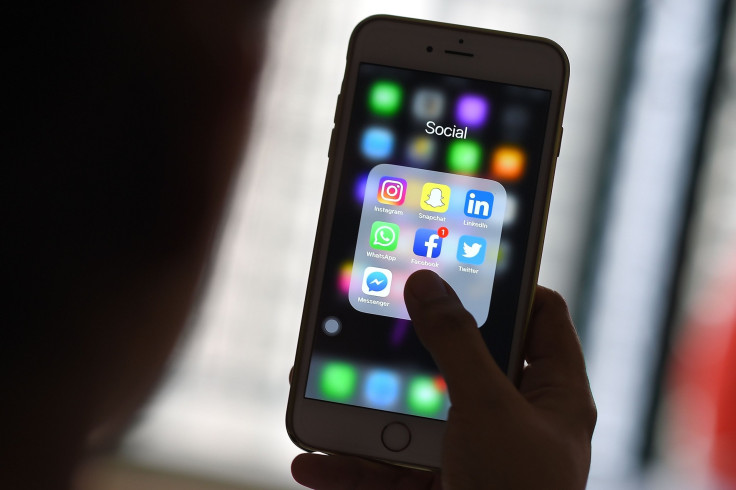Facebook's CFO Just Explained Why Twitter And Snap Don't Stand A Chance

Both Twitter (NYSE:TWTR) and Snap (NYSE:SNAP) love to talk about how they're improving the return on investment for marketers with their ad products. Twitter, for example, pointed to its lower cost-per-engagement (down 28%) and increased engagement (up 69%) as an indication of improving return on investment. Snap saw an even more exaggerated dynamic in the fourth quarter, when its average Snap Ad price declined 70% but impressions grew 575%.
This article originally appeared in the Motley Fool.
And improving ROI on a single platform is great, but investors need to remember Twitter and Snap are competing against Facebook (NASDAQ:FB) and Alphabet (NASDAQ:GOOG ) (NASDAQ:GOOGL) subsidiary Google for ad budgets.
I Couldn't Have Said It Better
During Facebook's first-quarter earnings call, CFO Dave Wehner told analysts, "What's really most important in winning budgets is our relative performance versus other opportunities presented to marketers."
That quote stems from one analyst's concerns over the impact of GDPR -- soon-to-be-enforced European privacy regulations -- on Facebook's ad business. Wehner was reminding investors that Facebook isn't the only one facing the challenge of GDPR compliance and it should impact its competitors to a certain degree as well.
But Wehner's words perfectly summarize why Facebook and Google continue to take share of the global digital advertising market despite Twitter and Snap's efforts to improve their ad products' returns on investment.
Marketers Will Exhaust Their Best Options First
While marketers have expanding digital ad budgets, they still only have a finite amount of money to spend.
As such, ad dollars will flow into ad products with the overall best return until market forces bring those returns to levels comparable with other ad products. That declining return could be through increased ad prices. It could also stem from something like saturation of the message in a certain channel -- making incremental ad dollars on the same platform less effective. (If you saw the same television commercial four times in a row, you wouldn't be any more likely to buy whatever's being advertised than if you'd seen it just once or twice.)
The best option for return on investment will vary from marketer to marketer and even from product to product within a company. Overwhelmingly, however, marketers say they get the best return on investment from either Google or Facebook. The two companies and their subsidiaries combined to offer the top return on investment for 86% of senior U.S. ad buyers, according to a recent survey from Cowen and Company.
So, not only do Snap and Twitter have to improve their ad products' returns on investment, but they have to improve them to a point where more marketers get a better return from their products than they do from Google or Facebook. Considering both the depth and breadth of Google and Facebook's user data, that's a tough task. Both Twitter and Snap have considerably fewer users and lower engagement levels than Facebook and Google while collecting less user data.
Can Twitter Or Snap Close The Gap?
Facebook grew ad revenue a whopping 50% in the first quarter. The biggest driver of that growth was a 39% increase in average ad price. As mentioned, increasing ad prices can be a factor in declining return on investment.
But when asked about whether advertisers have expressed concerns over return on investment, COO Sheryl Sandberg responded, "I think in terms of the ROI we are able to offer our marketers, the signs are strong and we also continue to see there's a lot of room for improvement." So, if there's any concern, Facebook isn't seeing it, and thinks there's still room to improve return on investment to support higher ad prices.
Meanwhile, Google is seeing a decrease in cost-per-click on its owned properties, owed to a shift toward more ads on mobile and YouTube, in particular. YouTube video ads are generally higher in the sales funnel (more brand advertisements than direct response), so marketers aren't willing to pay as much per impression. That doesn't make the return on investment any worse, though.
Cost-per-impression on Google's network member sites increased 18% year over year in the first quarter, indicating continued strength in demand as impressions stayed flat.
Overall, it looks like both Twitter and Snap have a long way to go before they see their ad products offer returns on investment at a rate comparable to Facebook or Google for most advertisers. To be sure, some advertisers may experiment with Twitter or Snapchat, and some may even find better returns, but Google and Facebook should continue to dominate the digital ad market largely at the expense of their smaller competitors' revenue growth.
Suzanne Frey, an executive at Alphabet, is a member of The Motley Fool's board of directors. Adam Levy owns shares of Alphabet (C shares) and Facebook. The Motley Fool owns shares of and recommends Alphabet (A shares), Alphabet (C shares), Facebook, and Twitter. The Motley Fool has a disclosure policy.





















